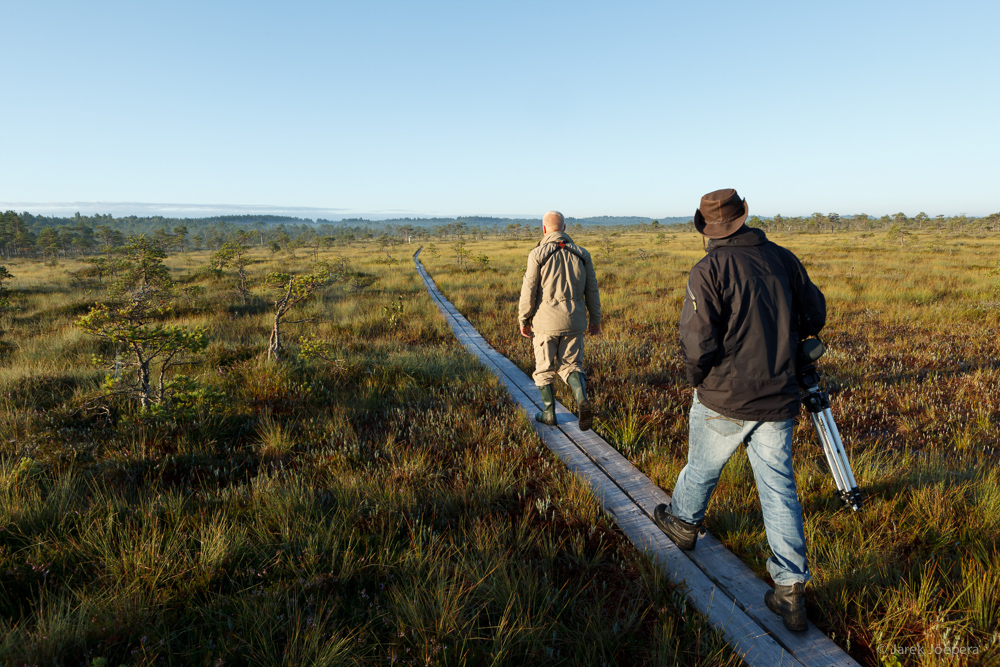Natourest offers several scheduled nature tours for people with different interests, but if you wish to travel with your own group of people or even alone, there’s always the possibility to ask for a private tour from us. Incase you have more specific wishes, possibilities, or timeframe, you can use the tours listed on our homepage just as inspiration for what you wish to see and experience and we can design you a tailor-made tour.
We are the longest operating nature tour operator in Estonia and our personnel has experience in organising various kinds of tours – birdwatching, mammal observation, nature walking, natural history, or botanical. Let us know about your preferences and we’ll help to make you a tour that you have always wished for.

If you wish to explore Estonia’s nature on your own, we offer the unique possibility to do a smart-guided tour. Just as with guided tours, you can choose from among our pre-designed tours or ask for a tailor-made smart-guided tour.
The tours listed on our homepage can be just inspiration for what you wish to see or experience. We can design you a totally unique tour according to your wishes.
Best time to come to Estonia
Here’s a short overview of when it’s the best time to experience some of the highlights of Estonian nature:
March and the end of April are the best times for seeing wintering arctic waterfowl. During the mentioned period, there’s a great chance to observe Steller’s Eider and hundreds of Long-tailed Ducks, feeding on the west coast of Saaremaa island. In the meantime, the spring migration is slowly starting and every day brings new species. Usually, the early arrivals include species like Cranes, Skylarks, and Northern Lapwings. Commonly it is also the best time for seeing arctic passerine birds like the Snow Bunting, Arctic Redpoll, or even Lapland Longspur.
On warmer days the woodpeckers get more active and then it’s possible to hear the drumming of species such as the White-backed Woodpecker, Three-toed Woodpecker, Black Woodpecker, Lesser-spotted Woodpecker, and Grey-headed Woodpecker. In the evening, there’s a chance to see or hear the Pygmy Owl, Ural Owl, or Tengmalm’s Owl. Black Grouse are already on their lekking grounds and Western Capercaillies and Hazel Grouses are just starting to. March and April are also good months for Elk spotting.
In April the migration is getting stronger every day and then there’s the chance to see new arctic species such as the Greater Scaup, Common– and Velvet Scoter, different Loons, Geese, and Swans. In the meantime, new and new nesting birds are arriving. April is also the best time for spotting woodpeckers, owls, and Galliformes.
The migration lasts until the middle of May and that is also the time when it is possible to see the greatest number of different species. By that time, late arrivals such as the Common Rosefinch, Blyth’s Reed Warbler, Greenish Warbler have just arrived. Earlier nesters are still active and the waterfowl migration has not ended yet.
May is also the best time for seeing local mammals – the Elks feed on fresh grass and leaves and are easy to spot. Bears start visiting the bear watching hide and also sightings of foxes and raccoon dogs will become frequent. Estonia has also a good number of Wolves, Lynx, Jackals, Wild Bore, Otters and other mammals and May is a really good month for accidental observations. In this month, Flying Squirrel tours can also be planned, as there is sufficient light even in the woods. The end of May is also a good time for looking for the first blossoming orchids, such as the majestic Lady’s Slipper. The best time to see as many orchids as possible is at the end of June and in the beginning of July.
While the summer is quite calm in terms of nature observations, it again gets more interesting from mid-August, when the waders start migrating. The greater migration starts in September. During the autumn migration, there are not so many different species, but the masses are greater, as the migration takes place during a shorter period. From the middle of September onwards, thousands of Cranes will start gathering on the fields, later accompanied by various species of geese. When the nights get colder, Hazel Grouse and Western Capercaille get more active again and for the Black Grouse, it signifies the beginning of the (false) autumn lek. Besides the Galliformes, autumn is also an active period for owls and woodpeckers. In terms of mammals, Brown Bears and Raccoon Dogs will be actively looking for food as they need to fatten up for the winter and the chances to spot them are much greater than during summer. Colder nights and shorter days trigger the rutting period of the Elk, which normally lasts from the end of August until the middle of October. The end of the elk rut signifies also the end of our autumn season.
